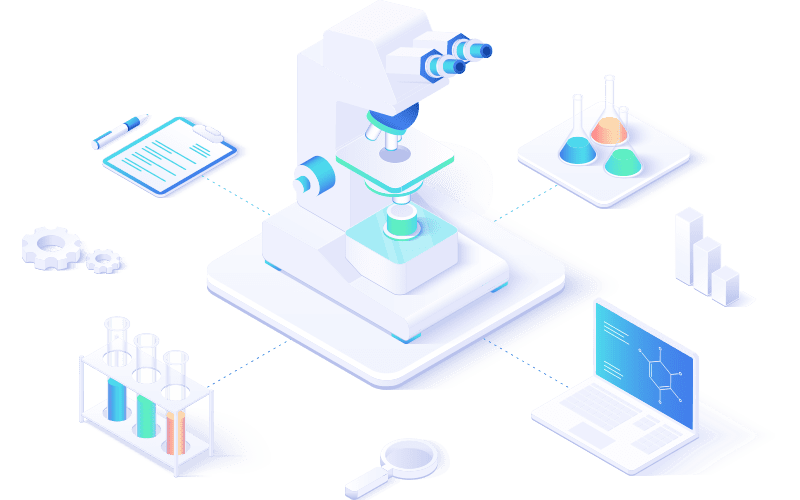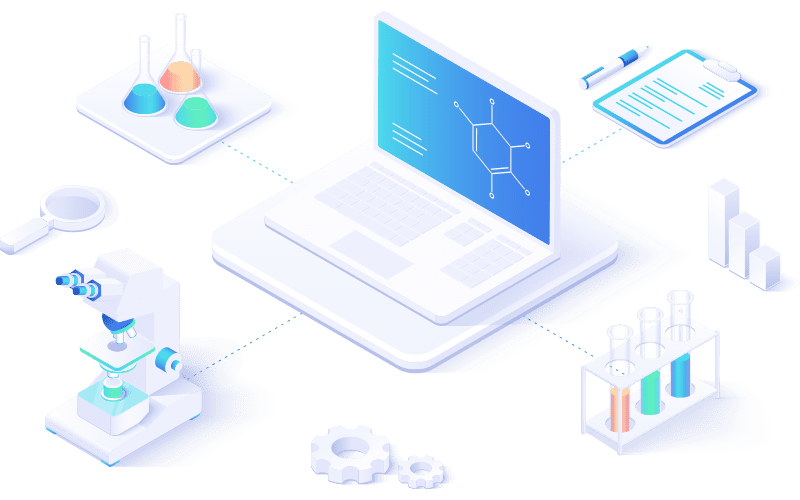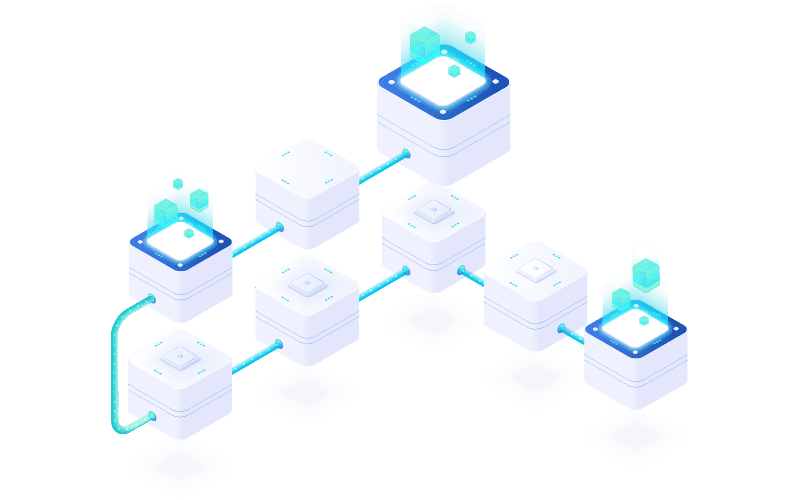
When shopping for a laboratory information management system (LIMS), it’s best to remind yourself of the old idiom “you get what you pay for.”
The number of businesses offering LIMS software has grown significantly over the past few decades, and cloud-based software as a service (SaaS) providers are the new norm. The global LIMS market was valued at $1.3 billion in 2021 and is expected to grow at a compound average growth rate of over 10 percent to cross $2 billion by 2025.1
Deciding to add a LIMS to your laboratory is not a decision to take lightly, nor is choosing the best LIMS vendor to handle your project. Taking the time to make specific inquiries about your requirements, understand how the price is calculated, seek out references, and question things that seem too good to be true will save you the time and money of investing in LIMS software this year, and replacing it the next.
Know your requirements
Your lab has many options to choose from, with eager LIMS vendors clamoring to offer you a demonstration. But has the vendor taken the time to understand your lab’s needs? Have they discussed your pain points and challenges with your current system (or lack thereof) and asked about your business, your workflows, your reporting needs, your instruments, and your requirements?
Be wary of a company that assumes they know what you need or doesn’t bother asking because their LIMS product is a “one-size-fits-all” option. Have reservations about a sales team that only highlights their software’s “slick” user interface but doesn’t get into the duller but ultimately more important workspaces and interfaces.
Know your lab’s requirements, or if you’re a new lab, work with the LIMS vendor to help you better understand what you need to be successful. A valuable LIMS partner will not only address what you need now but can also show you what you may need in the future. Come to the table with your “must have” features, a “nice to have” feature list, and a “don’t need” list. Don’t opt for the cheapest LIMS knowing it doesn’t meet all your must-have needs.
Understand the components of pricing
Shopping for a LIMS is not like shopping for a new car. You can scour the internet looking for the same year, make, model, mileage, color, and entertainment package across multiple dealer websites and see the price, financing options, and dealer rebates at the click of a button. There is no standardization in pricing across LIMS providers.
There are four primary components of pricing for any LIMS:
- Licenses
- Hosting
- Modules
- Services
Licenses
Unless you’re looking at open-source freeware for your LIMS, there will be a cost for user licenses. Some LIMS providers offer a couple of options for licensing: subscription and perpetual.
Subscription-based licensing is priced per the number of named or concurrent users you need and is paid for monthly or annually, depending on your contract agreement, and renewed during each contract year. There is an annual maintenance fee for this type of license. Perpetual licensing allows you to pay for a determined number of licenses up-front, and some LIMS providers may offer a reduction in maintenance fees for this type of licensing agreement.
When reviewing the cost proposal of a LIMS vendor, be sure to review the licensing agreement closely. The cheapest offer may only include one or two users, with an inflated cost for each additional subscription. Also, evaluate whether the licensing cost includes maintenance. If it doesn’t, you may not receive the upgrades and software support you need.
Hosting
You have the choice to host your new LIMS software on your own servers or go with a LIMS provider that offers a cloud-hosted solution. Either way, there is a cost involved.
Secure cloud-hosting costs will vary depending on whether you use a shared server or need a dedicated server. If you opt for self-hosting, there is still a support cost for scripting maintenance deployments to your environment, plus you will be responsible for purchasing any hardware and peripheral devices.
Modules
Modules are the fundamental components of your LIMS software solution. Some LIMS providers provide a packaged solution for different types of industries that contain the primary functionality you need. This functionality could include sample tracking, database management, inventory and instrument management, and reporting. The package may also include electronic notebooks or web-based portals. Other LIMS vendors price their system in a more à la carte manner, charging you for each feature individually.
It is necessary to review the details of module pricing thoroughly. If each LIMS provider does not define the features and functionality you are receiving, it is impossible to compare apples to apples and determine the best value for your dollar.
Services
“Services” is a broad term and can cover a wide range of tasks from project management, requirements gathering, configuration, report customization, instrument integration, third-party software integration, and training.
Some LIMS providers will charge a flat fee for the primary services needed to implement your LIMS. Others will charge an hourly rate. Sometimes the cheapest LIMS quotes will only include a minimum allowance for service hours, but once you begin the process, the hourly charges will add up.
Ask for multiple references and follow up with the contacts provided
Reputable LIMS providers will post testimonials and case studies on their websites for your review. But you should also ask for a list of references with contact names and email addresses. The references should be relevant (within the last few years) and should represent projects within a similar industry, scope, and size of your business.
It’s not enough to just ask for references, but also to follow up with the contacts provided. And don’t be afraid to ask specific questions, like:
- How does the system perform vs. expectations?
- What other systems did you consider when making this decision?
- How responsive is the vendor to issues?
- What is the quality of support?
- What was the total cost of the LIMS (e.g., software, hardware, services, training, etc.) and how did the final cost compare to the initial proposal?
- What would you do differently regarding selection or implementation?
If it’s too good to be true, it probably is
Every product has its plusses and minuses (no product can possibly exceed every expectation), and every LIMS vendor excels at different phases of the LIMS implementation process. Each LIMS provider you evaluate should be open and honest about not only their successes but also their failures. They should also provide a detailed scope of work for the money you agree to spend.
Question anything that seems out-of-the-ordinary. If one LIMS vendor quotes 30 percent lower than all the others but doesn’t provide an itemized list of everything included at that price, question the legitimacy of that quote. If the charge for maintenance and support is minimal compared to other proposals, question how they can provide these services so cheaply, or you may be left getting minimal maintenance and support.
Be cautious of the word “free.” Nothing is ever free. A LIMS vendor may offer free licenses or free hosting for your first year, but those costs are most likely incorporated into a line item somewhere (as a buyer, you just don’t see it). A goal of every business is to make a profit, so they can’t just give away key components or services. And if a LIMS vendor does use “free” as a sales tactic, question how they can afford to give it away and whether what they are offering for free has any real value to your business.
How much a cheap LIMS really costs
LabLynx has countless clients who have been won over by a low-price LIMS only to find themselves shopping again because the system did not meet their needs, wasn’t scalable alongside their business growth, or had customization costs that were outside their budget. In some cases, the company they chose simply let the product degrade without significant updates.
One specific example was an email from an exhausted and frustrated lab director for a small start-up clinical diagnostics laboratory. When they opened their lab, they did so with a LIMS reportedly ready-to-go out of the box. The LIMS vendor offered a Lite, Basic, and Premium pricing model, and the lab thought what they selected would provide them with everything they needed. That was not the case.
The lab found itself adding software for patient scheduling, different software for patient billing, and a third software solution for sending out patient reports. In the end, neither their LIMS provider nor these other software platforms could integrate their laboratory’s instruments. They needed a flexible LIMS solution that could do the work of all four companies, and they realized that that type of system couldn’t just be ordered from a special value menu, like at McDonald’s.
LabLynx’s dedication to fair pricing and expectations
LabLynx is a privately-owned LIMS software company with over 20 years of experience and solid revenue growth. Our 100+ clients have labs throughout the US and Canada, Puerto Rico, Costa Rica, Singapore, Taiwan, the United Kingdom, Germany, and elsewhere. The LabLynx ELab LIMS offers full enterprise-class functionality for any laboratory, from single users to multi-site global corporations and government entities.
LabLynx is not always the lowest-price LIMS solution. However, when you consider the things you can’t put a price tag on—the knowledge of our team of experts, our client-centric focus to ensure your every need is met, the promised and delivered support and maintenance of the ELab LIMS, and our numerous clients who do not hesitate to be professional references—you may find overall value outweighs the price.
See all that LabLynx has to offer at www.lablynx.com. Our friendly sales team will schedule an introductory call to learn more about you and make sure LabLynx is a good fit. We’ll schedule a demonstration that highlights how to resolve your current pain points and improve your lab’s path to profitability and regulatory compliance.
References
1 https://www.globenewswire.com/en/news-release/2022/03/07/2398091/0/en/Global-Laboratory-Information-Management-System-LIMS-market-valued-at-1-3-billion-in-2021-is-expected-to-grow-at-a-CAGR-of-over-10-to-cross-2-billion-by-2025.html
Accelerate Your Lab's Success & Experience LabLynx
"*" indicates required fields
Explore the LabLynx Suites

LIMS Suite
Seamless Sample and Workflow Management
The LabLynx LIMS Suite empowers laboratories with the tools needed to manage samples, workflows, compliance, and more in one centralized system. It’s the backbone for labs seeking efficient, reliable, and scalable management solutions.

ELN Suite
The LabLynx ELN Suite offers a modern approach to managing lab data and experiments. With its secure, intuitive platform, your team can record, store, and collaborate effortlessly, supporting innovation every step of the way.

Lab Automation
Automate for Efficiency and Growth
Streamline operations and boost productivity with the LabLynx Lab Automation Suite. Designed for labs ready to embrace advanced automation, this suite integrates systems, instruments, and workflows to deliver efficiency at scale.
